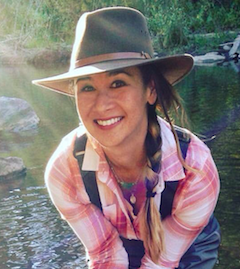
EDITOR’S NOTE: This is the second post in our five-part series on the art of the interview from narrative journalist and teacher Kim Cross. In the opening piece, Cross notes the need for an interviewing approach that is different than that she learned about straightforward news reporting. He, she focuses on the pre-interviewing that’s needed for a successful story pitch.
By Kim Cross
There is no narrative writing without narrative reporting. And the first challenge of narrative writing is finding a viable story — a story that contain the elements of a narrative and allows you access to those elements. The key element is almost always character.Here’s my simplified definition of a narrative: A character struggles through an ordeal that produces insight or change.
Ordeal implies a source of tension — the engine of narrative writing. Screenwriter Aaron Sorkin calls it “intent and obstacle.” The character wants something, but has to overcome challenges standing in the way. I like “ordeal” because an ordeal can be frightening or funny, life-altering or comically inconvenient. The ordeal is something the character experienced firsthand. The character must struggle against and through that ordeal in some way.
Many pitches are rejected due to a lack of specificity. The writer wants to write about some particular topic or an issue. That’s a start. If the topic interests you enough, you are motivated to learn more. But learning about the topic is not enough to frame it as a story.
“Put a human face on it,” many editors say. Find a character struggling through the issue in some very specific way. That struggle is a source of tension, and tension is the narrative engine.
Scouting for the right character
So how do you find the character that makes the story? One who lets you follow them through a journey that engages the reader intellectually and emotionally?
Figure out where that character might gather or connect with other like-minded (or like-problemed) individuals, or with people who are affected by or care deeply about the issue you want to explore. It could be a place (the food stamps line, a drag club, a senior center, an ER waiting room) or an organized gathering (a protest march, a class, a book club meeting, a church service). As an outsider, it can sometimes be easier to approach a group of people who might be wary about the press when they’re alone alone but feel comfort and in their togetherness.
If you can’t find an organic gathering, chances are there’s an advocacy group or agency that wants to raise awareness for this issue. If your story can educate readers, those advocates or officials have a vested interest in helping you. Figure out if the group has a media contact, PR professional, marketing chief or spokesperson. Then ask for an informational interview. Use that interview to learn more about the issue so you have your foundation of facts in place. At the same time, explain that you need to find a person who embodies the matter at hand. Often, the official will have someone top-of-mind; sometimes they have to do a little searching on their end. Either way, they are helping their cause while they help you find your story.
Useful questions for the informational interview:
- What are the biggest challenges of the issue that most people don’t understand?
- Can you put me in touch with someone who is struggling with these challenges?
- How willing might this person be to working with me? What might be their concerns?
- What else should I read/consider/know before talking with this person?
As you’re pre-reporting to flesh out your pitch, remember to ask yourself the questions your editor will be asking as they read your pitch:
- So what? (Why does this story matter? Does it address some larger theme?)
- Who cares? (To whom does this matter? Who is the audience for this story?)
- Why now? (Is there a news hook, trend, or other timely element of this story?)
- Why this writer? (What makes you uniquely qualified to write this story?)
Once you identify a central character and can answer these questions, you’ve got most of the ingredients for a viable story idea. You might have enough to weave them into a pitch. The next phase of the interviewing process may occur just before or just after your pitch.
* * *
Kim Cross is a journalist, historian, and New York Times Best-Selling author of “What Stands in a Storm,” “The Stahl House” and “In Light of All Darkness.” She teaches graduate level Feature Writing for Harvard Extension School’s master’s degree program in journalism and is a founding writing instructor of the Hemingway Center’s Sawtooth Writing Retreat.


